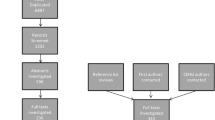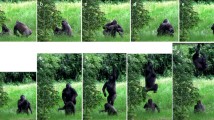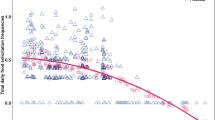Abstract
Elaborate manual skills of food processing are known in several species of great ape; but their manner of acquisition is controversial. Local, “cultural” traditions show the influence of social learning, but it is uncertain whether this includes the ability to imitate the organization of behavior. Dispute has centered on whether program-level imitation contributes to the acquisition of feeding techniques in gorillas. Here, we show that captive western gorillas at Port Lympne, Kent, have developed a group-wide habit of feeding on nettles, using two techniques. We compare their nettle processing behavior with that of wild mountain gorillas in Rwanda. Both populations are similar in their repertoires of action elements, and in developing multi-step techniques for food processing, with coordinated asymmetric actions of the hands and iteration of parts of a process as “subroutines”. Crucially, however, the two populations deal in different ways with the special challenges presented by nettle stings, with consistently different organizations of action elements. We conclude that, while an elaborate repertoire of manual actions and the ability to develop complex manual skills are natural characteristics of gorillas, the inter-site differences in nettle-eating technique are best explained as a consequence of social transmission. According to this explanation, gorillas can copy aspects of program organization from the behavior of others and they use this ability when learning how to eat nettles, resulting in consistent styles of processing by most individuals at each different site; like other great apes, gorillas have the precursor abilities for developing culture.



Similar content being viewed by others
References
Altmann J (1974) Observational study of behaviour: sampling methods. Behaviour 49:227–265
Bates LA, Byrne RW (2010) Imitation: what animal imitation tells us about animal cognition. Wiley Interdisciplinary Rev Cogn Sci doi:10.1002/wcs.77
Bauer PJ (1998) If it is inevitable, it need not be imitated. Behav Brain Sci 21:684–685
Boesch C (1996) The emergence of cultures among wild chimpanzees. In: Runciman WG, Maynard-Smith J, Dunbar RIM (eds) Evolution of social behaviour patterns in monkeys and man. The British Academy, London, pp 251–268
Boesch C, Tomasello M (1998) Chimpanzee and human cultures. Curr Anthropol 39:591–614
Boesch C, Marchesi P, Marchesi N, Fruth B, Joulian F (1994) Is nut cracking in wild chimpanzees a cultural behaviour? J Hum Evol 26:325–338
Byrne RW (1999a) Cognition in great ape ecology. Skill-learning ability opens up foraging opportunities. Symp Zool Soc Lond 72:333–350
Byrne RW (1999b) Object manipulation and skill organization in the complex food preparation of mountain gorillas. In: Parker ST, Mitchell RW, Miles HL (eds) The mentality of gorillas and orangutans. Cambridge University Press, Cambridge, pp 147–159
Byrne RW (2001) Clever hands: the food processing skills of mountain gorillas. In: Robbins MM, Sicotte P, Stewart KJ (eds) Mountain gorillas. Three decades of research at Karisoke. Cambridge University Press, Cambridge
Byrne RW (2003) Imitation as behaviour parsing. Philos Trans R Soc Lond B 358:529–536
Byrne RW (2007) Culture in great apes: using intricate complexity in feeding skills to trace the evolutionary origin of human technical prowess. Philos Trans R Soc B 362:577–585
Byrne RW, Byrne JME (1991) Hand preferences in the skilled gathering tasks of mountain gorillas (Gorilla g. beringei). Cortex 27:521–546
Byrne RW, Byrne JME (1993) Complex leaf-gathering skills of mountain gorillas (Gorilla g. beringei): variability and standardization. Am J Primatol 31:241–261
Byrne RW, Russon AE (1998) Learning by imitation: a hierarchical approach. Behav Brain Sci 21:667–721
Byrne RW, Stokes EJ (2002) Effects of manual disability on feeding skills in gorillas and chimpanzees: a cognitive analysis. Int J Primatol 23:539–554
Byrne RW, Corp N, Byrne JME (2001a) Estimating the complexity of animal behaviour: how mountain gorillas eat thistles. Behaviour 138:525–557
Byrne RW, Corp N, Byrne JME (2001b) Manual dexterity in the gorilla: bimanual and digit role differentiation in a natural task. Anim Cogn 4:347–361
Byrne RW, Barnard PJ, Davidson I, Janik VM, McGrew WC, Miklósi Á, Wiessner P (2004) Understanding culture across species. Trends Cogn Sci 8:341–346
Caldwell CA, Millen AE (2009) Social learning mechanisms and cumulative cultural evolution: is imitation necessary? Psychol Sci 20:1478–1483
Connolly K, Elliott JM (1972) The evolution and ontogeny of hand function. In: Blurton-Jones N (ed) Ethological studies of child behaviour. Cambridge University Press, Cambridge, pp 329–383
Corp N, Byrne RW (2002) The ontogeny of manual skill in wild chimpanzees: evidence from feeding on the fruit of Saba florida. Behaviour 139:137–168
Custance D, Whiten A, Fredman T (1999) Social learning of an artificial fruit task in capuchin monkeys (Cebus apella). J Comp Psychol 113:13–23
de Waal FBM (1998) No imitation without identification. Behav Brain Sci 21:689
Fox E, Sitompul A, Van Schaik CP (1999) Intelligent tool use in wild Sumatran orangutans. In: Parker ST, Miles HL, Mitchell RW (eds) The mentality of gorillas and orangutans. Cambridge University Press, Cambridge, pp 99–116
Galef BG (2003) “Traditional” foraging behaviours of brown and black rats (Rattus norwegicus and Rattus rattus). In: Fragaszy DM, Perry S (eds) The biology of traditions: models and evidence. Cambridge University Press, Cambridge, pp 159–186
Hobaiter C, Byrne RW (2010) Able-bodied wild chimpanzees imitate a motor procedure used by a disabled individual to overcome handicap. PLoS One 5:e11959
Hoppitt WJE, Laland KN (2008) Social processes influencing learning in animals: a review of the evidence. Adv Study Behav 38:105–165
Humle T, Matsuzawa T (2002) Ant dipping among the chimpanzees of Bossou, Guinea, and some comparisons with other sites. Am J Phys Anthropol 58:133–148
Laland KN, Janik V (2006) The animal cultures debate. Trends Evol Ecol 21:542–547
Langergraber KE, Boesch C, Inoue E, Inoue-Murayama M, Mitani JC, Nishida T, Pusey AE, Reynolds V, Schubert G, Wrangham RW, Wroblewski E, Vigilant L (2010) Genetic and ‘cultural’ similarity in wild chimpanzees. Proc R Soc B doi:10.1098/rspb.2010.1112
McGrew WC (1974) Tool use by wild chimpanzees feeding on driver ants. J Hum Evol 3:501–508
McGrew WC (1992) Chimpanzee material culture: implications for human evolution. Cambridge University Press, Cambridge
McGrew WC, Ham RM, White L, Tutin CG, Fernandez M (1997) Why don’t chimpanzees in Gabon crack nuts? Int J Primatol 18:353–374
Mobius Y, Boesch C, Koops K, Matsuzawa T, Humle T (2008) Cultural differences in army ant predation by West African chimpanzees? A comparative study of microecological variables. Anim Behav 76:37–45
Sawyer SC, Robbins MM (2009) A novel food processing technique by a wild mountain gorilla (Gorilla beringei beringei). Folia Primatol 80:83–88
Stafford DK, Milliken GW, Ward JP (1993) Patterns of hand and mouth lateral biases in bamboo leaf shoot feeding and simple food reaching in the gentle lemur (Hapalemur griseus). Am J Primatol 29:195–207
Stoinski TS, Wrate JL, Ure N, Whiten A (2001) Imitative learning by captive western lowland gorillas (Gorilla gorilla gorilla) in a simulated food-processing task. J Comp Psychol 115:272–281
Stokes EJ, Quiatt D, Reynolds V (1999) Snare injuries to chimpanzees (Pan troglodytes) at 10 study sites in East and West Africa. Am J Primatol 49:104–105
Tennie C, Hedwig D, Call J, Tomasello M (2008) An experimental study of nettle feeding in captive gorillas. Am J Primatol 70:584–593
Tennie C, Call J, Tomasello M (2009) Great ape traditions and zones of latent solutions. St Andrews, Scotland
Tomasello M (1998) Emulation learning and cultural learning. Behav Brain Sci 21:703–704
van Schaik CP, Ancrenaz M, Borgen G, Galdikas B, Knott CD, Singleton I, Suzuki A, Utami SS, Merrill M (2003) Orangutan cultures and the evolution of material culture. Science 299:102–105
Vereijken B, Whiting HTA (1998) Hoist by their own petard: the constraints of hierarchical models. Behav Brain Sci 21:705
Whiten A (2005) The second inheritance system of chimpanzees and humans. Nature 437:52–55
Whiten A, Goodall J, McGrew WC, Nishida T, Reynolds V, Sugiyama Y, Tutin CEG, Wrangham RW, Boesch C (1999) Cultures in chimpanzees. Nature 399:682–685
Whiten A, Goodall J, McGrew WC, Nishida T, Reynolds V, Sugiyama Y, Tutin CEG, Wrangham RW, Boesch C (2001) Charting cultural variation in chimpanzees. Behaviour 138:1481–1516
Whiten A, Horner V, de Waal FBM (2005) Conformity to cultural norms of tool use in chimpanzees. Nature 437:737–740
Acknowledgments
The Port Lympne data were collected by CH, who would like to acknowledge the financial support of the European Commission Sixth Framework Program grant “Origins of Referential Communication” Contract 12787. MK acknowledges the support of the University of Stirling and Metro Toronto Zoo for her Ph.D. funding. We thank the Howletts Wild Animal Trust for permission to conduct the study at Port Lympne Wild Animal Park, and in particular we are grateful to Pippa Ducat, Mark Kingston Jones and Charlie Romer for their assistance in planning the project and gathering information. We thank all the staff members of the gorilla section for so generously sharing their invaluable knowledge and assistance. In particular head keeper Phil Ridges, along with fellow keepers Helen Roberts, Ingrid Naisby, Rachel Wood, Sharon Tremaine and Julia Betts. We thank Claudio Tennie for stimulating discussions, and for allowing us to use his video exemplars.
Author information
Authors and Affiliations
Corresponding author
Electronic supplementary material
Below is the link to the electronic supplementary material.
ESM_1 Video of mountain gorilla processing nettle in group-typical way (MPG 4409 kb)
ESM_2 Video of captive gorilla processing nettle; file kindly provided by Dr. Claudio Tennie, who noted that this video was “typical” of the behavior analyses in Tennie et al. (2008) (MPG 4782 kb)
ESM_7 Video of Port Lympne gorilla Djala using the leaves-separate technique for processing nettles (MPG 6862 kb)
ESM_8 Video of Port Lympne gorilla Kishi using the leaves-separate technique for processing nettles (MPG 8080 kb)
ESM_9 Video of Port Lympne gorilla Jaja using the leaves-separate technique for processing nettles (MPG 15024 kb)
ESM_10 Video of Port Lympne gorilla Dishi using the leaves-separate technique for processing nettles (MPG 8034 kb)
ESM_11 Video of Port Lympne gorilla Kibi using the leaves-separate technique for processing nettles (MPG 8230 kb)
ESM_14 Video of captive gorilla using the action described by Tennie et al. (2008) as “folding”; file kindly provided by Dr Claudio Tennie (MPG 724 kb)
Rights and permissions
About this article
Cite this article
Byrne, R.W., Hobaiter, C. & Klailova, M. Local traditions in gorilla manual skill: evidence for observational learning of behavioral organization. Anim Cogn 14, 683–693 (2011). https://doi.org/10.1007/s10071-011-0403-8
Received:
Revised:
Accepted:
Published:
Issue Date:
DOI: https://doi.org/10.1007/s10071-011-0403-8




